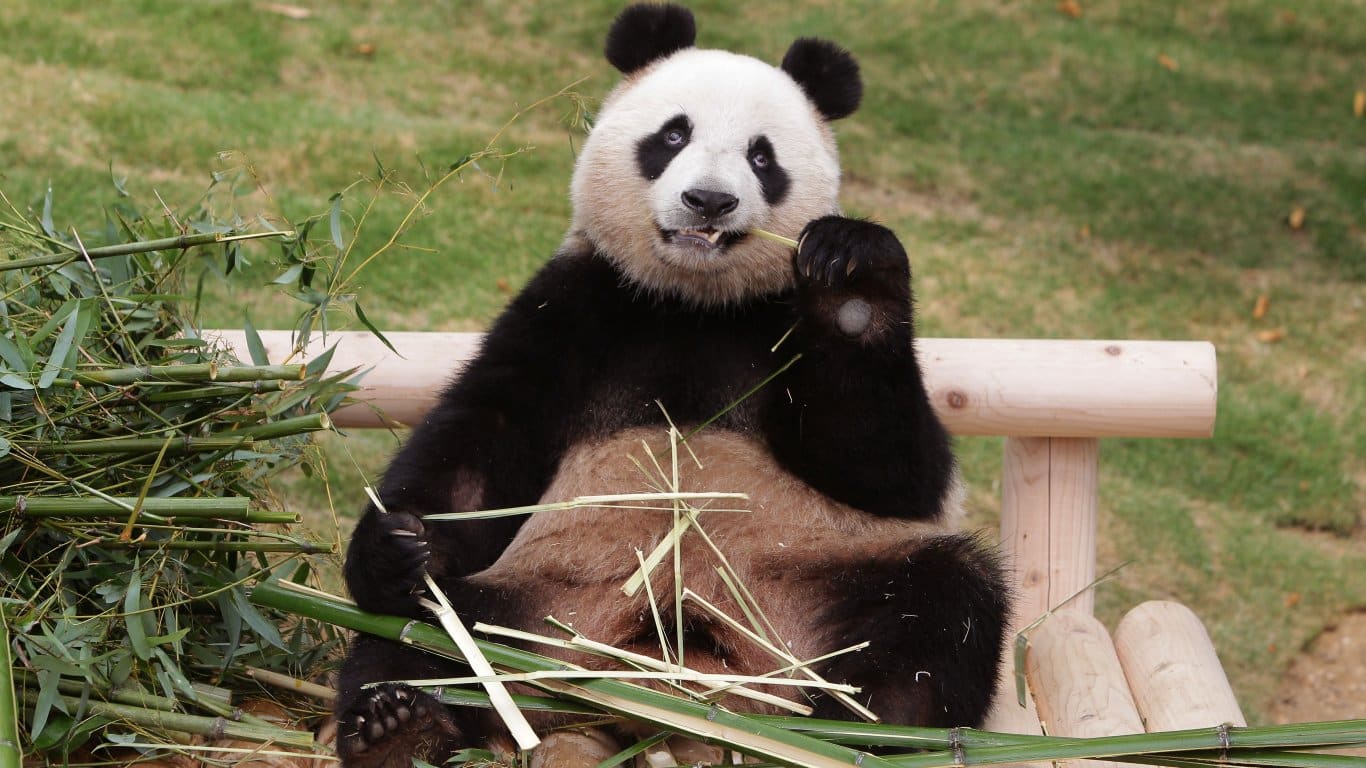They are less efficient than humans, but enough to catch and eat bamboo, scientists say
Fossils unearthed in China help scientists better understand one of the wonders of evolution: the giant panda’s false thumb, which helps this vegetable-loving bear grasp and chew the bamboo that makes up most of its diet , reported Reuters.
Researchers report finding near the city of Zhaotun in northern Yunnan province fossils of an extinct panda called Ailurarctos, about 6 million years old. These fossils preserve the oldest known evidence of a makeshift extra finger. It is actually a greatly enlarged wrist bone called the radial sesamoid bone.
The appendage closely resembles the false thumb of modern pandas, but is slightly longer and lacks the internal hook at the end that is present in extant species and provides even greater ability to manipulate bamboo stems, shoots and roots while feeding.
The false thumb is an evolutionary adaptation that complements the existing five true toes of the panda’s paw.
The bear’s paw lacks the thumb characteristic of humans and various primates, which can be opposed to the other fingers and allow objects to be grasped and manipulated. A similar function is performed by the false thumb.
“The false thumb is used as a very crude opposable thumb for grasping bamboo — kind of like our own thumbs, except it’s located on the wrist and is much shorter than humans,” says the paleontologist at the Los Angeles County Museum of Natural History. Xiaoming Wang, lead author of the study, published in the journal Scientific Reports.
The ancient pandas of the genus Ailurarctos were the evolutionary ancestors of modern pandas. They were smaller, but with anatomical features indicating a similar lifestyle, including a bamboo diet.
The modern panda fake thumb has some advantages over the earlier version.
“The hooked false toe provides a firmer grip on the bamboo and makes it easier for the panda to walk. For this reason, we think it has become shorter, not longer, in modern pandas,” says Wang.
The strong grip allows the panda to break food into pieces more quickly, the scientist explains.
Researchers first discovered a bone from the paw of Ailurarctos in 2010, then in 2015 they found teeth and a false thumb. This gives them a clearer picture of the ancient animal. The oldest known evidence of this thumb-like structure dates back to about 102,000 – 49,000 years ago in fossils of the same panda species that lives today.
The false thumb allows pandas to hold bamboo to eat, but not rotate the food as a real thumb would allow.
“One of the most important features of humans and primates is the evolution of a thumb that can oppose the rest of the fingers for precision grasping. The panda’s false thumb is much less efficient than a human’s, but it is sufficient to provide it with the ability to grasping to eat bamboo,” said paleontologist and study co-author Tao Deng of the Chinese Academy of Sciences in Beijing.
Pandas, one of eight bear species in the world, once inhabited vast territories in Asia. Now they live mostly in temperate forests in the mountains of Southwest China. Their number in the wild is estimated to be less than 2,000.
Pandas’ diet is 99 percent vegetarian, although they do occasionally eat small animals and carrion. Due to their inefficient digestive system, they consume large quantities to meet their nutritional needs – 12-38 kg of bamboo, eating up to 14 hours a day.
Researchers say the false thumb was not present in another closely related bear that lived about 9 million years ago.
“This is a great innovation – turning an insignificant bone into an element that is useful for a specific purpose,” said Harvard University paleobiologist and study co-author Lawrence Flynn.












